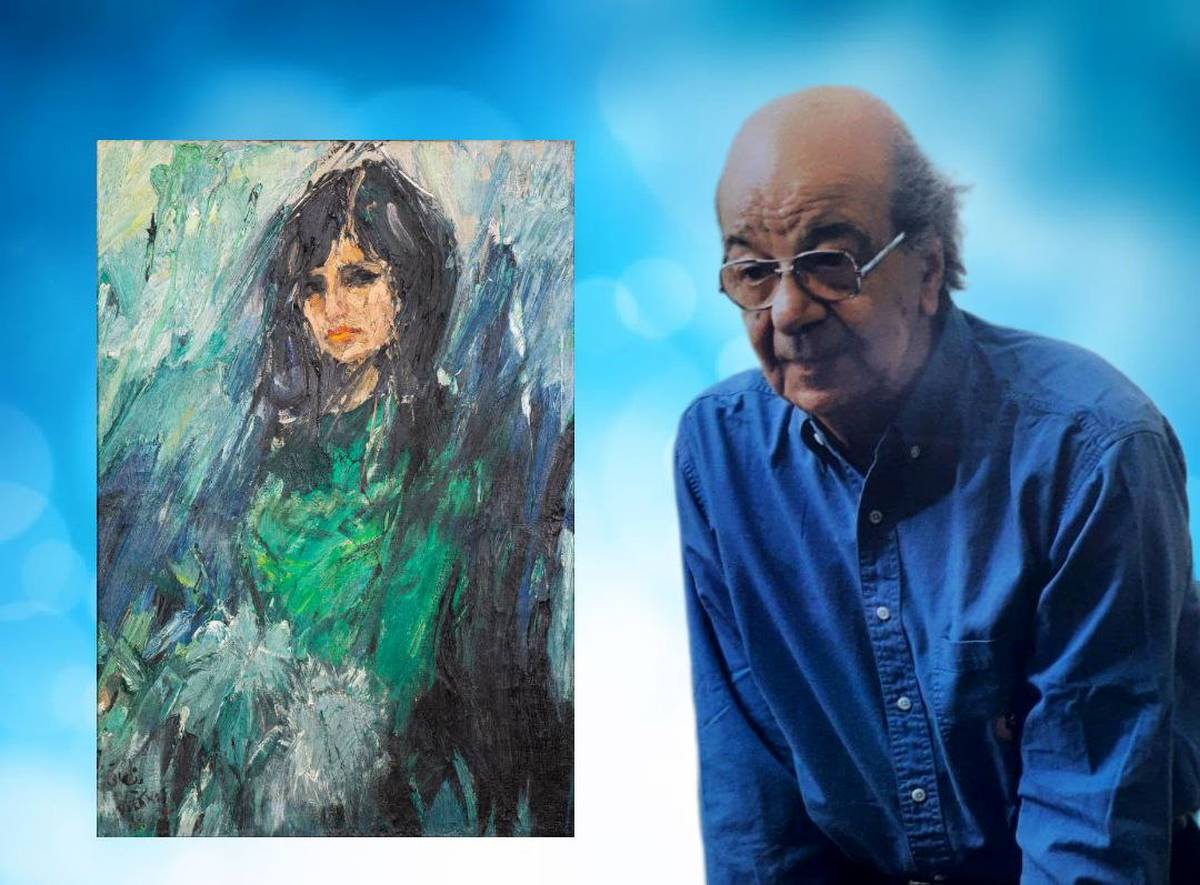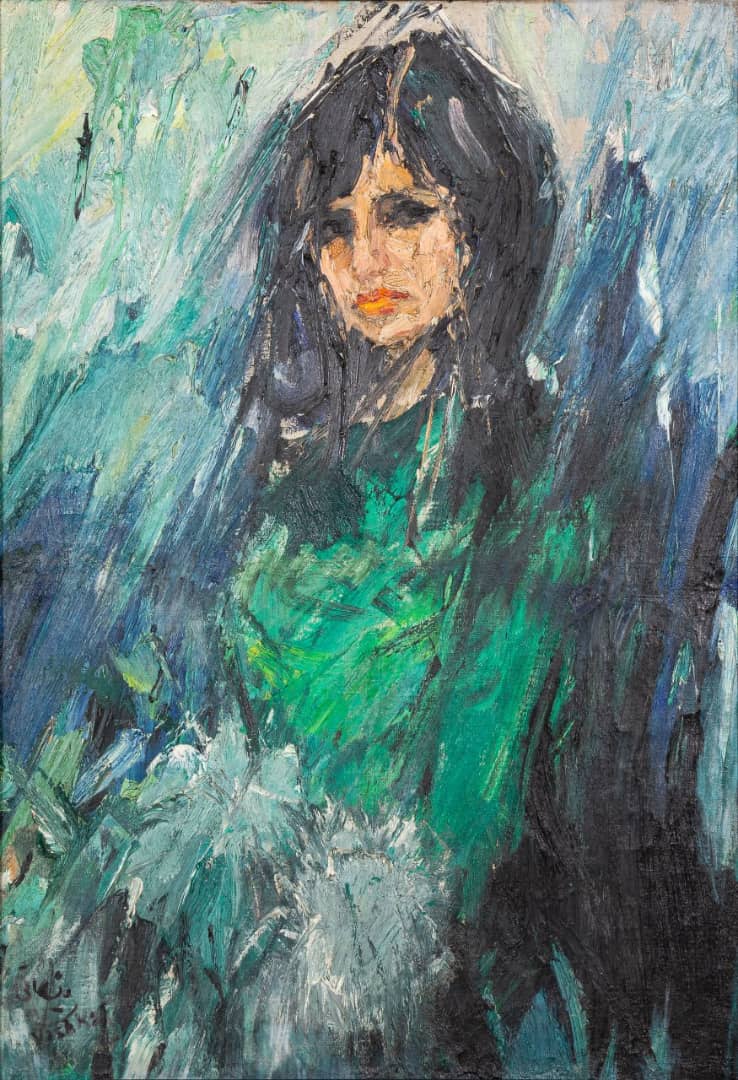
The Grandeur of Sorrow in Color: A Look at Mehdi Vishkai’s Painting in the Raha Gallery Collection
Mehdi Vishkai’s work invites us to pause—not just before the image, but within ourselves. This painting is not merely a representation of a face; it is a mirror reflecting psychological, social, and perhaps even historical conditions. Subdued greens suggest a life stilled, while deep blues echo the weight of a lingering sorrow.
ArtDayMe : Raha Gallery Collection of the Middle East,Founded and directed by engineer Mohammadreza Ghaemmaghami, has been actively committed to cultural engagement in the region for over two decades. The collection preserves a rich array of modern and contemporary masterpieces by both Iranian and Arab artists.
Among them is a renowned untitled work by the late Mehdi Vishkai—an oil on canvas measuring 72 × 105 cm.
Mehdi Vishkai (b. 1920, Rasht – d. 2006) was one of the pioneers of modern painting in Iran, best known for his expressive and psychologically charged portraits. He moved to Tehran in his youth, studied at the Kamal-ol-Molk Art School, and later at the Faculty of Fine Arts. He eventually became the head of the newly established National School of Fine Arts.
His work has been widely exhibited in Iran and abroad and has been featured in numerous auctions.

The compelling piece held in the Raha Gallery Collection is among the most significant of Vishkai’s oeuvre, embodying the key aesthetic elements that define his style. Amid bold brushstrokes and passionate layers of paint, a woman’s face emerges from the depths of the canvas—her gaze half-absent, half-piercing, suspended in a silent, anxious stillness over a background of green and blue.
Created in an expressive oil technique, the painting channels a profound psychological intensity. Rather than depicting external reality, it expresses an eruption from within. The female figure, simultaneously fractured and resilient, is rendered through vigorous strokes of paint. Her eyes seem to search for something lost, while her vividly orange lips glimmer like a mute cry against the cold backdrop.
Vishkai must be recognized as one of the first Iranian modernists to embrace bold, expressive brushwork and heightened color in a raw and avant-garde approach during the formative years of Iranian modernism. His style bridges academic painting and modernism, with thick, patchy application of color influenced by Post-Impressionist masters.
His most recognized works are portraits—either commissions or created from personal connection. In color and composition, Vishkai achieved a distinctive and highly personal voice. His dynamic, energetic strokes shaped the early language of modern Iranian imagery, imbuing his works with a visceral, magnetic force. This intensity is fully apparent in the painting now preserved in the Raha Gallery Collection.

Technically, the work is built with heavy impasto, lending it both a tactile depth and a pulsing sense of life. A vertical composition and visual focus on the face draw the viewer into the subject’s inner world, where the noise of the outside world dissolves into a heavy silence. The color palette—green, blue, turquoise, and black—creates a cold and mysterious atmosphere. In contrast, the bright lips and white blotches at the bottom—perhaps symbolizing a flower, garment, or snow—serve as visual focal points and emotional accents. These colors serve not only form but meaning: the suppressed greens reflect extinguished vitality, while the somber blues speak of enduring grief.
The painterly gesture is spontaneous, intuitive, and at times confrontational—each stroke like an outburst of emotion. This direct engagement with the canvas links Vishkai to European Expressionists while revealing his deeply rooted cultural sensibility.
Ultimately, this painting is far more than a portrait. It is a psychological, social, and historical reflection. The woman’s face may represent the lived experience of a society in transition—or perhaps it is simply an echo from within an artist searching for freedom or meaning through paint.
Vishkai’s work compels us to stop: a moment of stillness before the image, and a quiet reckoning within ourselves.

This artwork belongs to the Raha Gallery Collection of the Middle East.

LEAVE A RELPY